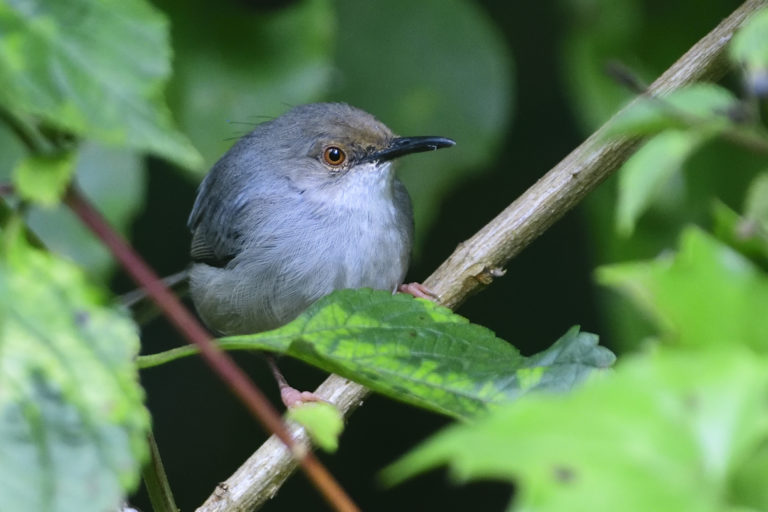
My next guest was Sybrand Van Niekerk from South Africa. Sybrand was doing and African big year and contacted me only a couple of months before he arrived. The quest was quite easy: Get him as many new birds as possible in the limited time we had to our disposal. Martin Joho would be my local guide for the first part of the trip. Sybrand had 1166 birds when he arrived and my goal was to get him as close to 1400 as possible.
Day 1, Monday, September 23 – Kilimanjaro International Airport to Kiligolf
I had some car trouble in the morning, and arrived a few minutes late to pick up Sybrand at the airport. He was already waiting and we drove to my place at Kiligolf. I had arranged for Sybrand to bring me a new camera from SA, my new Nikon D850 had arrived. We started picking up birds on the way home. His first bird was a House Crow. Once at home, we relaxed a little on my balcony and from my garden Sybrand quickly added Long-tailed Fiscal, Superb Starling, Chestnut and Vitelline Masked Weaver, Yellow-spotted Petronia and White-bellied Go-away-bird. We went for a walk on the Golf estate and new birds were: Yellow-collared Lovebird, Magpie Shrike, Purple Grenadier, Blue-capped Cordonbleu, Buff-bellied Warbler, White-browed Coucal, Variable Sunbird, Greater Painted-Snipe, Dark-capped Yellow Warbler, Brubru and Scarlet-chested Sunbird. We walked back to my house where Selvine prepared an excellent meal for us. After the meal, we went through Sybrand´s target list for Tarangire where we were going the day after and I came to 22 targets. Quite a mission?
Some pictures from Day 1

Buff-bellied Warbler, Phyllolais pulchella

Greater Painted-Snipe, Rostratula benghalensis
Day 2, Tuesday, September 24. Kiligolf – Tarangire – Kiligolf
We left my home at 06:00 and headed for Tarangire National Park. It is about a 2 hour drive from my home. We were at the gate around 08:00. Once inside the gate, we started picking up new birds: Hildebrandt´s Starling, Chestnut Sparrow, Rufous-tailed Weaver, Augur Buzzard, Eastern Chanting Goshawk, Gabar Goshawk, Yellow-collared Lovebird, Ashy Starling, Spotted Palm Thrush, Swahili Sparrow, Greater Honey guide, Red-bellied Parrot, Magpie Shrike, Northern Red-billed Hornbill, African Grey Flycatcher, D`Arnaud´s Barbet, Banded Parisoma, Speckle-fronted Weaver, White-headed Buffalo-Weaver, Bare-eyed Thrush, Arrow-marked Babbler, Saddle-billed Stork, Red-necked Spurfowl, Yellow-necked Spurfowl, White-backed Vulture, Bateleur, Crested Francolin, Striped Kingfisher, Slate-coloured Boubou, Bare-faced Go-away-bird, Nubian Woodpecker, Fischer´s Sparrowlark, Secretarybird, Von der Decken´s Hornbill and Northern White-crowned Shrike were some of the birds we picked up before lunch. We had lunch prepared by Selvine at the normal picknic site and wasted no time before we were out birding again. We went to the Little Serengeti in Tarangire and picked up Yellow-throated Sandgrouse, Double-banded Courser, Chestnut-bellied Sandgrouse, White-bellied Bustard, Black-faced Sandgrouse, Coqui Francolin, Common Ostrich, Tawny Eagle, Brown Snake Eagle, Buff-crested Bustard, Northern Pied Babbler, Rosy-patched Bushshrike, Northern Wheatear and African Grey Woodpecker. Maybe one of my best days in Tarangire of the 22 targets Sybrand had, we picked up 24! Rosy-patched Bushshrike and Northern Wheatear we were supposed to get the next day at Lark Plains. We exited the park and drove back towards home and stopped at Nanja, to see if we could locate the Rosy Starling that I saw there earlier that month. No luck, so we drove home and arrived before dark. Selvine prepared a fantastic meal for us and after a beer or two, we retired for the night. The day after we were going to the Lark plains for some new birds.
Some pictures from day 2.
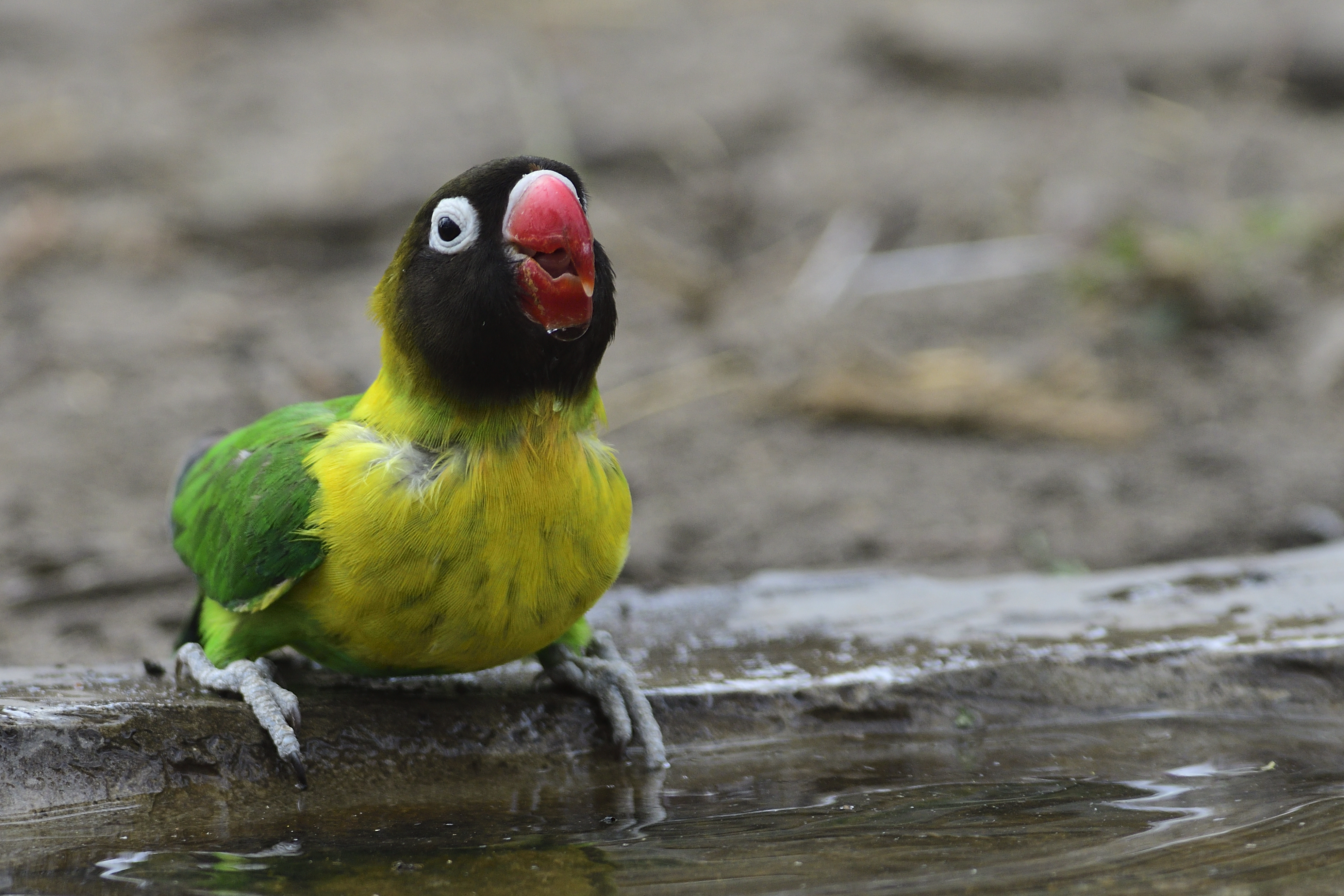
Yellow-collared Lovebird, Agapornis personatus – Endemic to East Africa

Swahili Sparrow, Passer suahelicus
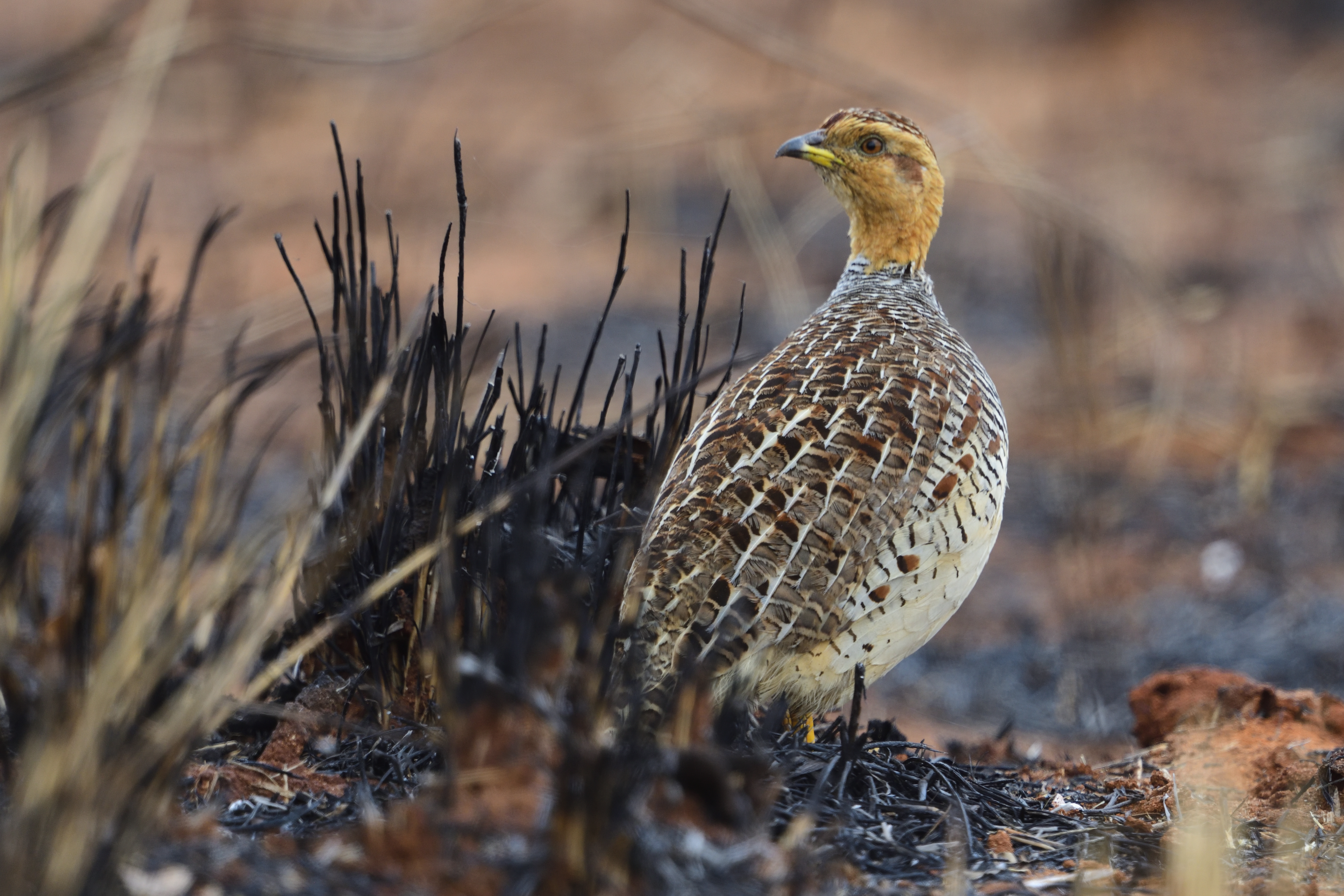
Coqui Francolin, Peliperdex coqui
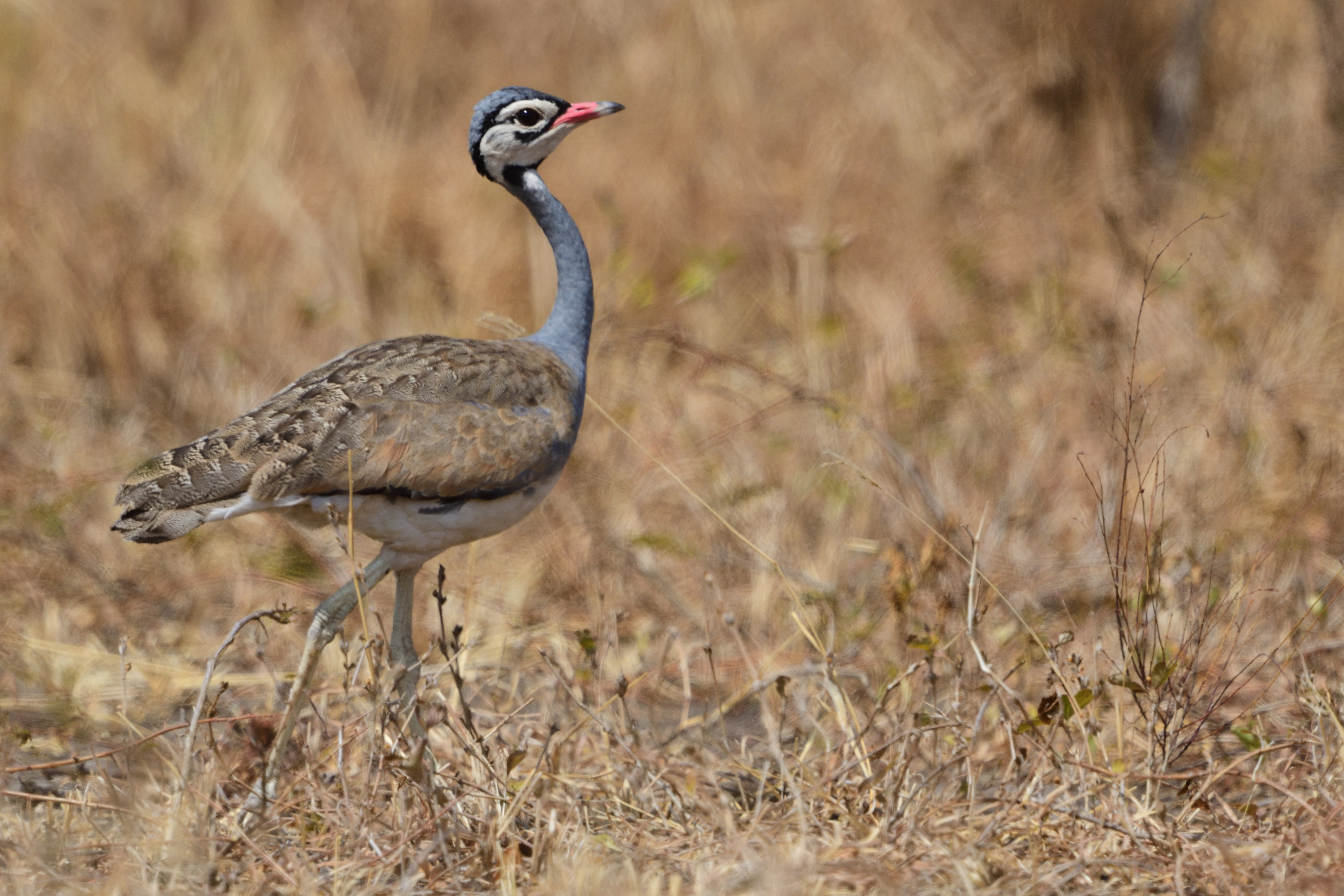
White-bellied Bustard, Eupodotis senegalensis
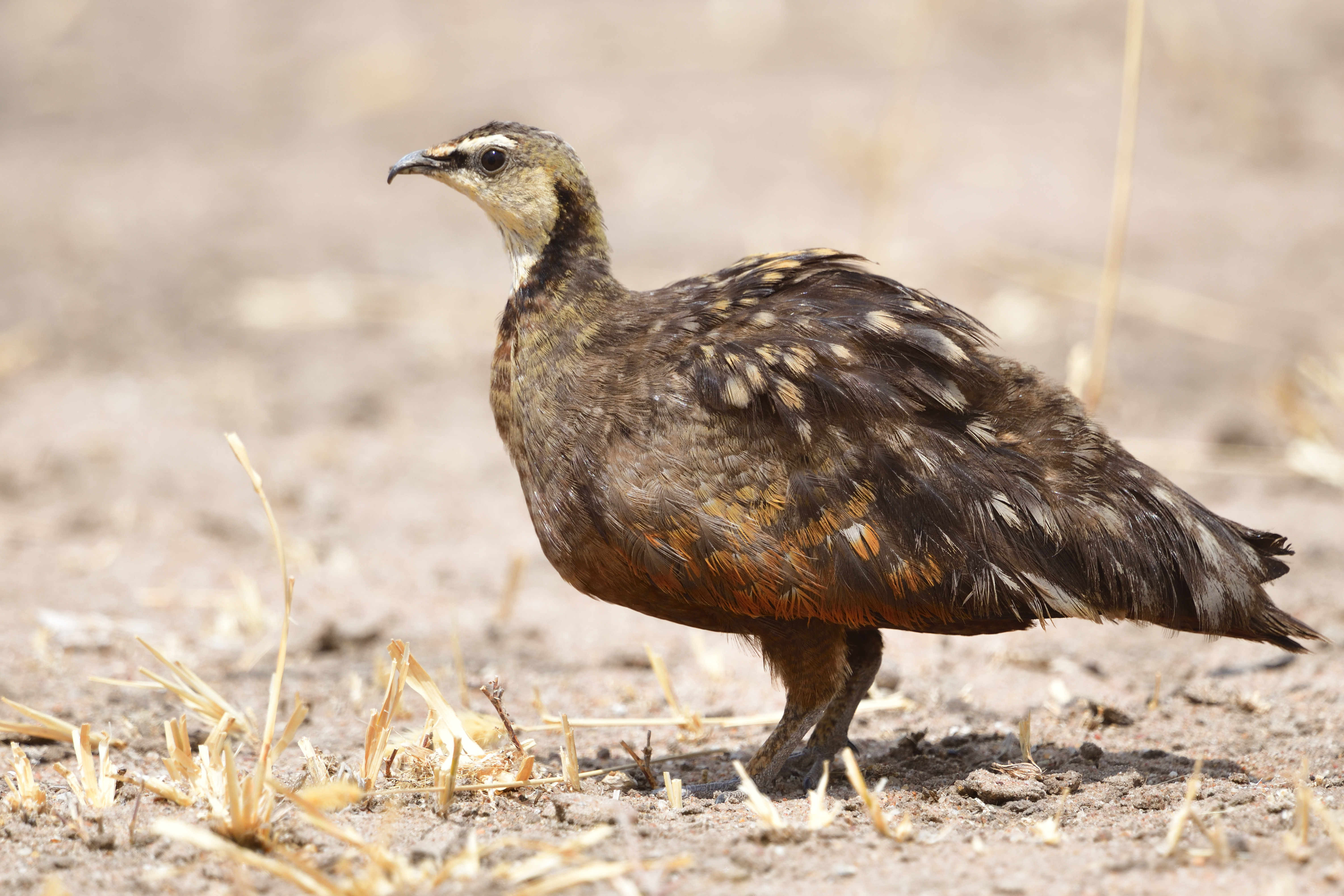
Yellow-throated Sandgrouse, Pterocles gutturalis

Rosy-patched Bushshrike, Rhodophoneus cruenthus – Endemic to NE Africa

Northern Wheatear, Oenanthe oenanthe

Rufous-tailed Weaver, Histurgops ruficauda – Endemic to N Tanzania and Mara in Kenya

Sybrand, Martin and me after a very successfull day in Tarangire
Day 3, Wednesday, September 25 – Kiligolf- Lark Plains, Oldonya Sambu – Lake Duluti – Kiligolf.
Today we had two local birders James and Abdul with us. We left again at 06:00 and reached Lark Plains, Engikaret around 07:30. As we drove in, we saw Short-tailed Lark and Taita Fiscal before we parked the car. A short walk produced Beesley´s Lark. That was our target species, so we decided to go slowly to Saruni´s (The local Masai guide) Booma. On the way we picked up Pygmy Falcon, Yellow-bellied Eremomela, Foxy Lark, and Tiny Cisticola. We parked next to Saruni´s Booma and did a walk. Banded Parisoma, Black-necked Weaver, Grey-capped Social Weaver, Blue-naped Mousebird, Red-fronted Warbler, White-bellied Canary, Speckle-fronted Weaver, Red-billed Oxpecker, Northern Crombec, Southern Grosbeak Canary, Black-throated Barbet, Abyssinian Scimitarbill, Red-throated Tit, Grey Wren-Warbler, Brubru, Red-and-yellow Barbet, Beautiful Sunbird and Black-faced waxbill + many more were found before we had lunch under an Acacia tree. After lunch, we moved on to our next stop Oldonyo Sambu. Despite we are birding in a garbage dump there, this spot yields some nice birds: White-fronted Bee-eater, Lesser Honeyguide, Streaky Seed-eater, Red-fronted Barbet, Red-fronted Tinkerbird, Baglafecht Weaver, Kenya Sparrow and Schalow´s Wheatear were some of the birds we saw. We had to make a small pit stop in Arusha with a mechanic, before we continued to Lake Duluti. The target there is the breeding colony of Taveta Weavers. Thick-billed Weaver breads in the same colony and we also picked up some water birds and a Malachite Kingfisher. Another successful birding day was finished and we returned home for dinner. At this point, we usually go on the safari to Usambara, but we decided on doing Arusha National Park the day after.
Some pictures from Day 3:

Beesley´s Lark, Chersomanes beesley – Endemic to Engikaret, Tanzania

James, me, Abdul and Sybrand after yet a succesfull quest for the endemic Beesley´s Lark

Foxy Lark, Calendulauda alopex – Endemic to NE Africa

Black-throated Barbet, Tricholaema melanocephala – Endemic to NE Africa

Red-throated Tit, Parus fringillinus – Endemic to N Tanzania and S Kenya

Red-and-yellow Barbet, Trachyphonus erythrocephalus – Endemic to NE Africa
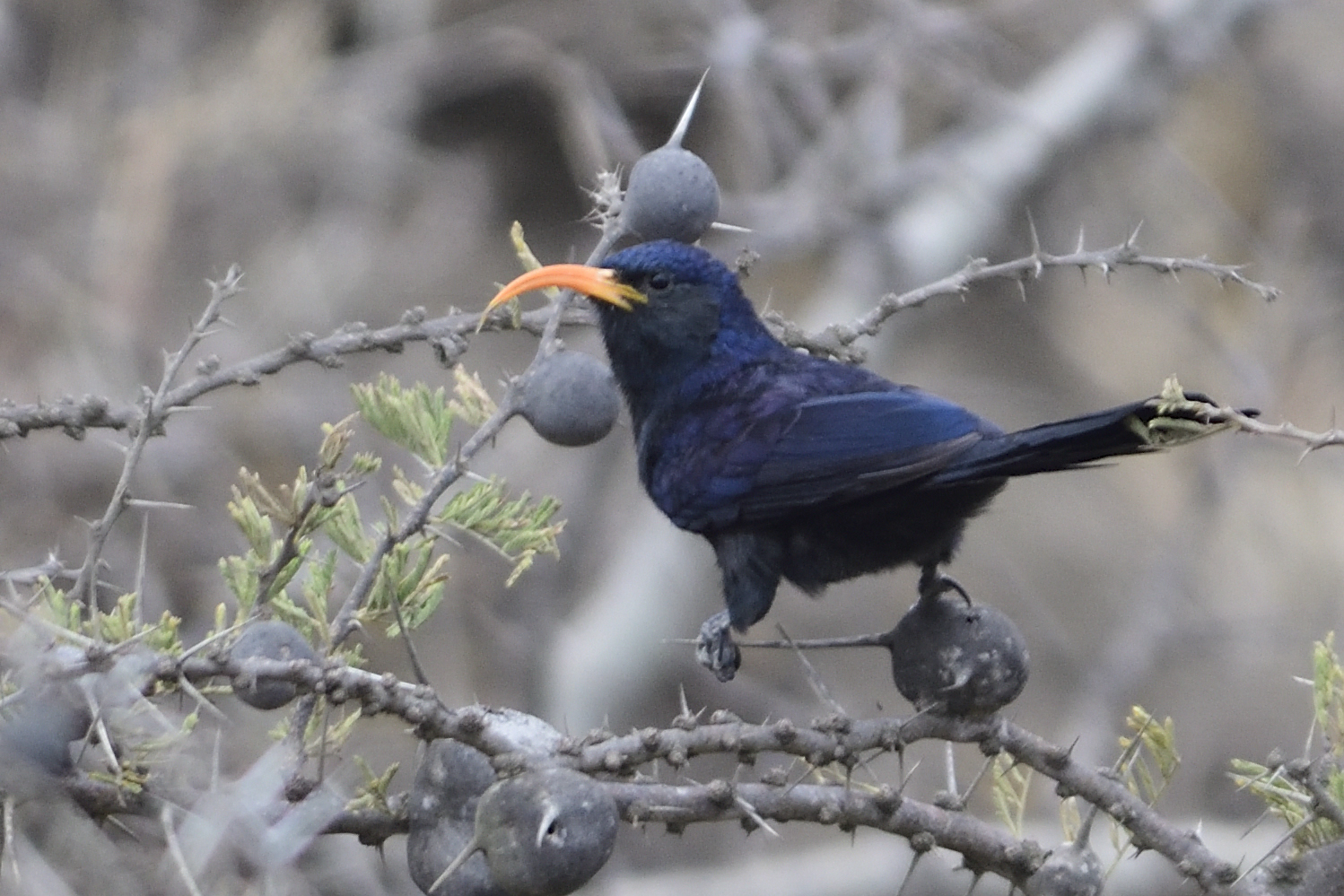
Abyssinian Scimitarbill, Rhinopomastus minor – Endemic to NE Africa

Red-fronted Tinkerbird, Pogoniulus pusillus

Kenya Rufous Sparrow, Passer rufocinctus – Endemic to Kenya and Tanzania

Schalow´s Wheatear, Oenanthe schalowi – Endemic to East Africa
Day 4, Thursday, September 26 – Kiligolf – Arusha NP – Kiligolf
We had an early start again and was at the gate around opening time. In fact we were there before the staff had arrived. I have a regular loop i do in Arusha NP stopping first at the musum, then do the Ngurduto Crater, then the lakes and last Mt. Meru. On the way to the Museum, we picked up amongst other: Singing Cisticola, Southern Citril, Yellow-throated Longclaw, Trilling Cisticola, Harlaub´s Turaco, Scaly Francolin and Moustached Grass warbler. We exited the car at the museum and added Waller´s Starling, Black-headed Apalis, Retz´s Helmetshrike, Eastern Bronze-naped Pigeon and African Golden Oriole. On the way up to the crater, we ticked Tambourine Dove, Golden-tailed Woodpecker, White-eyed Slaty Flycatcher, White-starred Robin, White-eared barbet, Stripe-faced Greenbul, Green Malkoha, Rüppel´s Robin-Chat, African Olive Pigeon, African Hill Babbler, Silvery-cheeked Hornbill, Abyssinian Crimsonwing, Brown Woodland Warbler, Moustached Tinkerbird and Cinnamon-chested Bee-eater. On the crater rim, we added Montane White-eye, Green-backed Honeybird, Sharpe´s Starling, Red-backed Mannikin, Black-fronted Bushshrike, Kenrick´s Starling and a Lanner Falcon. We had lunch at one of the picnic sites on the crater rim. After lunch, we drove towards the Momella lakes. We stopped at a small wetland and added Hottentot Teal. Getting closer to the lakes, we drove into a different habitat and added Northern Fiscal, Augur Buzzard, Southern Pochard, Winding Cisticola, Lesser and Greater Flamingo, Ovambo Sparrowhawk! (My first sighting in EA) and Maccoa Duck (another first for EA.) Up on the mountain, we only managed to add Bronzy Sunbird and Brown-breasted Barbet. We returned home to pack the car for the upcoming safari.
Some pictures from day 4:

Scaly Spurfowl, Pternistis squamatus
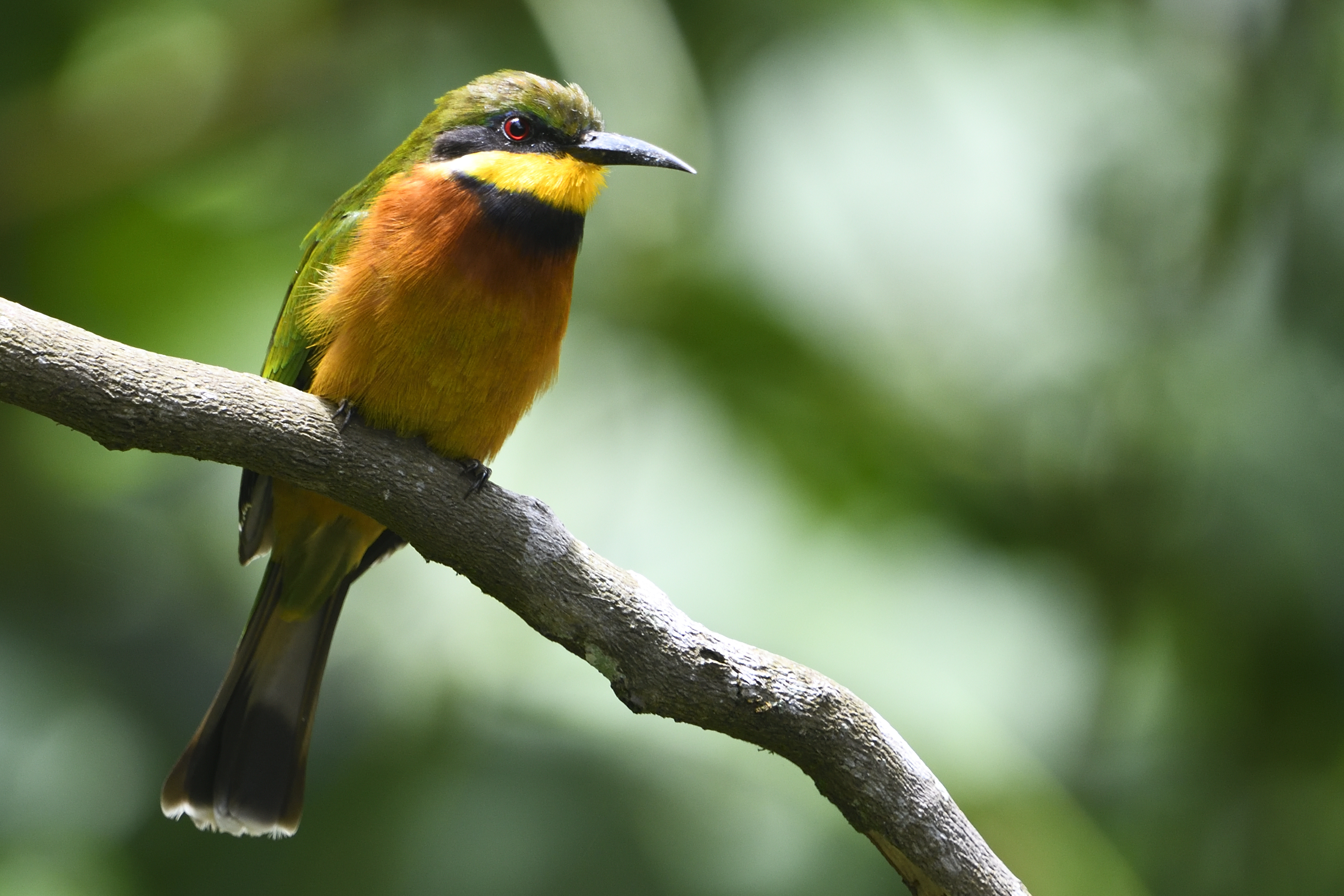
Cinnamon-chested Bee-eater, Merops oreobates – Endemic to East Africa
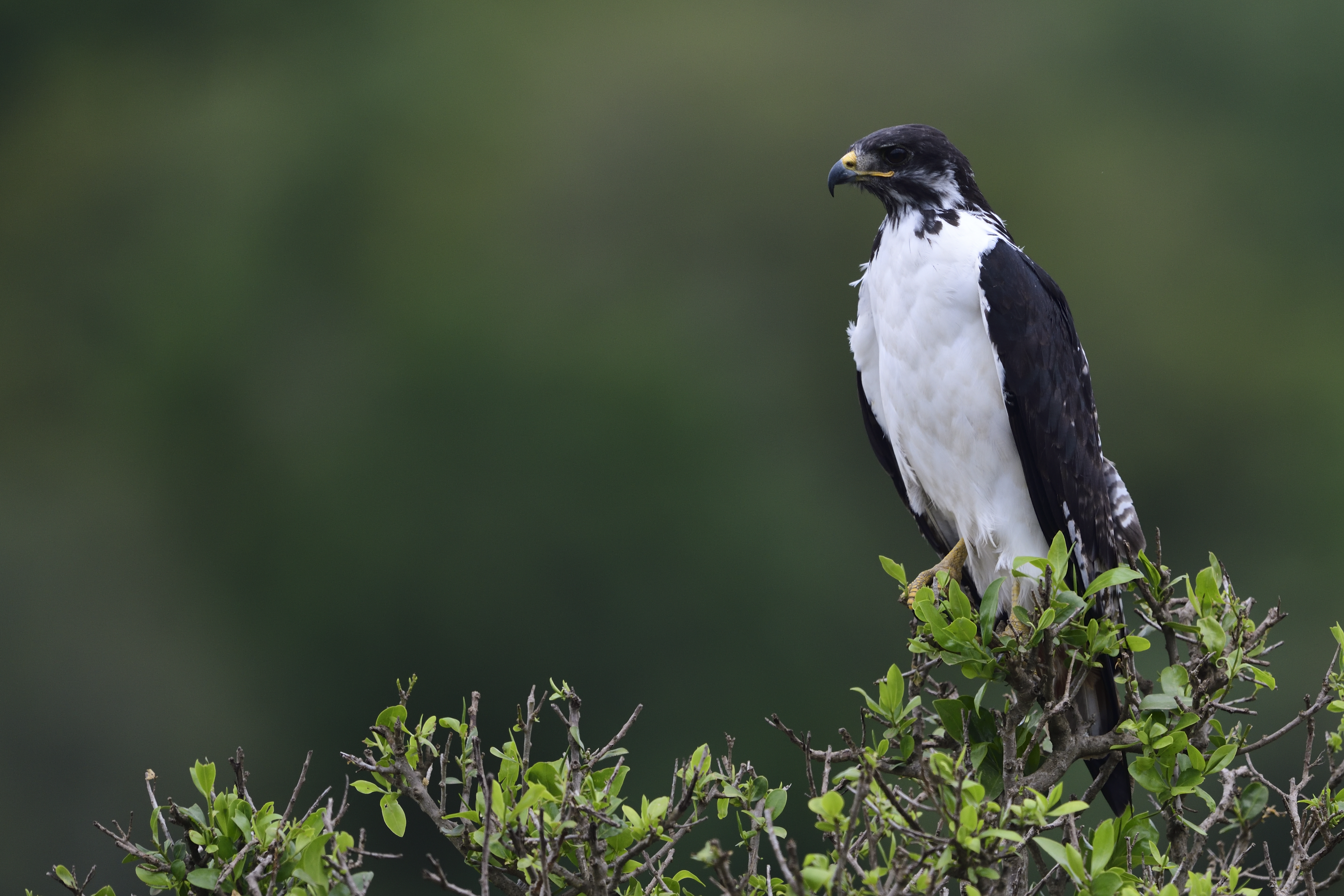
Augur Buzzard, Buteo Augur
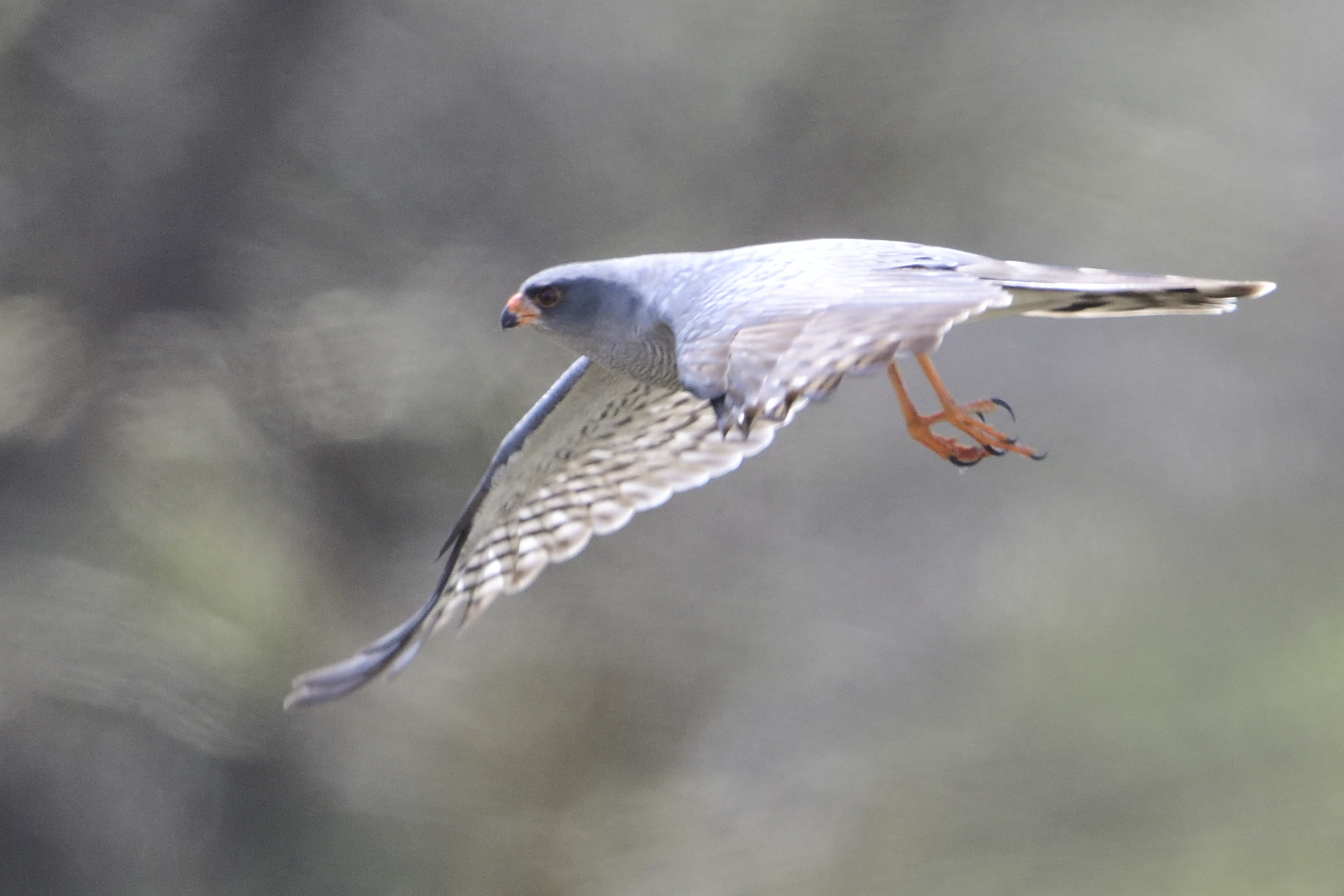
Ovambo Sparrowhawk, Accipiter ovampensis
Day 5, Friday, September 27 – Kiligolf – Nyumba Ya Mungu Dam- Hedaru.
Let the Safari begin! We left my home early, the car packed to the rim. First stop was a place near Nyumba ya Mungu Dam. The place is full of dry scrubs and a wonderful place to watch birds. It is about 3 hour from my house, so we arrived there around 09:30. The birds were waiting for us. Very quickly, we added Sombre Greenbul, Southern Grosbeak Canary, White-headed Mousebird, Bare-eyed Thrush, Black-necked Weaver, Tsavo Sunbird, Eastern Violet-backed Sunbird, Somali Bunting, Pringle´s Puffback, Hunter´s Sunbird, Parrot-billed Sparrow, Pink-breasted Lark and Grey Wren-Warbler + many more we had seen before. We had a packed breakfast in the car courtesy of Selvine. After breakfast we went to a site just outside Mkomazi NP. Here we added Reichenow´s Seed-eater, White-crested Helmetshrike, D´Arnaud´s Barbet, Red-headed Weaver, Bare-eyed Thrush, Red-faced Crombec and Pygmy Batis. We were now going to our place for the night, the Elephant Motel in Same, but to my big surprise, the hotel was full. It had never happened to me before, but apparantly there were many boarding schools in the area and it was parents visiting days that weekend. Fortunately, it was not too late. I had seen a hotel in Hedaru about 60 km to the south. That meant that we had to do South Pare Mountains on our way back without Martin, but that was our only option. About an hour later, we reached Hedaru and took into Palace Hotel. It looked great from the outside, but let me tell you this is a place you do not want to stay. We all got food poisoned that night.
Some pictures from Day 5:

Tsavo Sunbird, Cinnyris tsavoensis – Endemic to East Africa

Black-necked Weaver, Ploceus nigricollis

White-bellied Go-away-bird, Corythaixoides leucogaster – Endemic to NE Africa
Day 6, Saturday, September 28 – Hedaru – Magamba Forest, West Usambara.
We were happy to get out of the hotel where we had been placed on the 4th floor with no elevators and no one brought our luggage. We were soon on our way. Made a little stop at a small abandon camp ground where Martin had a spot for Northern Brownbul. We found the Brownbul and also Grey-headed Kingfisher, Striped Kingfisher, Nubian Woodpecker and Spot-flanked Barbet + many more. We were soon on our way and stopped in Mombo for some lunch. We climbed up to Lushoto and continued to Magamba Forest where we were supposed to camp for 3 nights. We arrived quite early and was entertained by a Barred Long-tailed Cuckoo while setting up camp. In the afternoon, we were ready for a walk: Evergreen Forest warbler, Moustached Tinkerbird, Southern Citril, Fülleborn´s Boubou, Black-headed Mountain Greenbul, Cinnamon Bracken warbler, Usambara Weaver, Streaky Seed-eater, Green Barbet, Black-headed Apalis, Forest Batis, African Hill babbler, Yellow-bellied Waxbill, African Black Swift, Crowned Eagle, African Black Duck, African Olive Pigeon, Usambara Double -collared Sunbird, Red-capped Forest Warbler, Mountain Buzzard, Sharpe´s Starling, White-tailed Crested Flycatcher, Silvery-cheeked Hornbill, Stripe-faced Greenbul, White-starred Robin, Hartlaub´s Turaco, Usambara Thrush, White-chested Alethe, African Goshawk, Usambara Akalat and Spot-throat were recorded. Selvine cooked us a very nice bush meal and after that we had an African shower behind the Landy. The camp is at 2.000 meter and it got quite cold at night, something that Sybrand experienced.
Some pictures from Day 6:

Spot-flanked Barbet, Tricolaema lacrymosa – Endemic to East Africa

Emerald-spotted Wood-Dove, Turtur chalcospilos
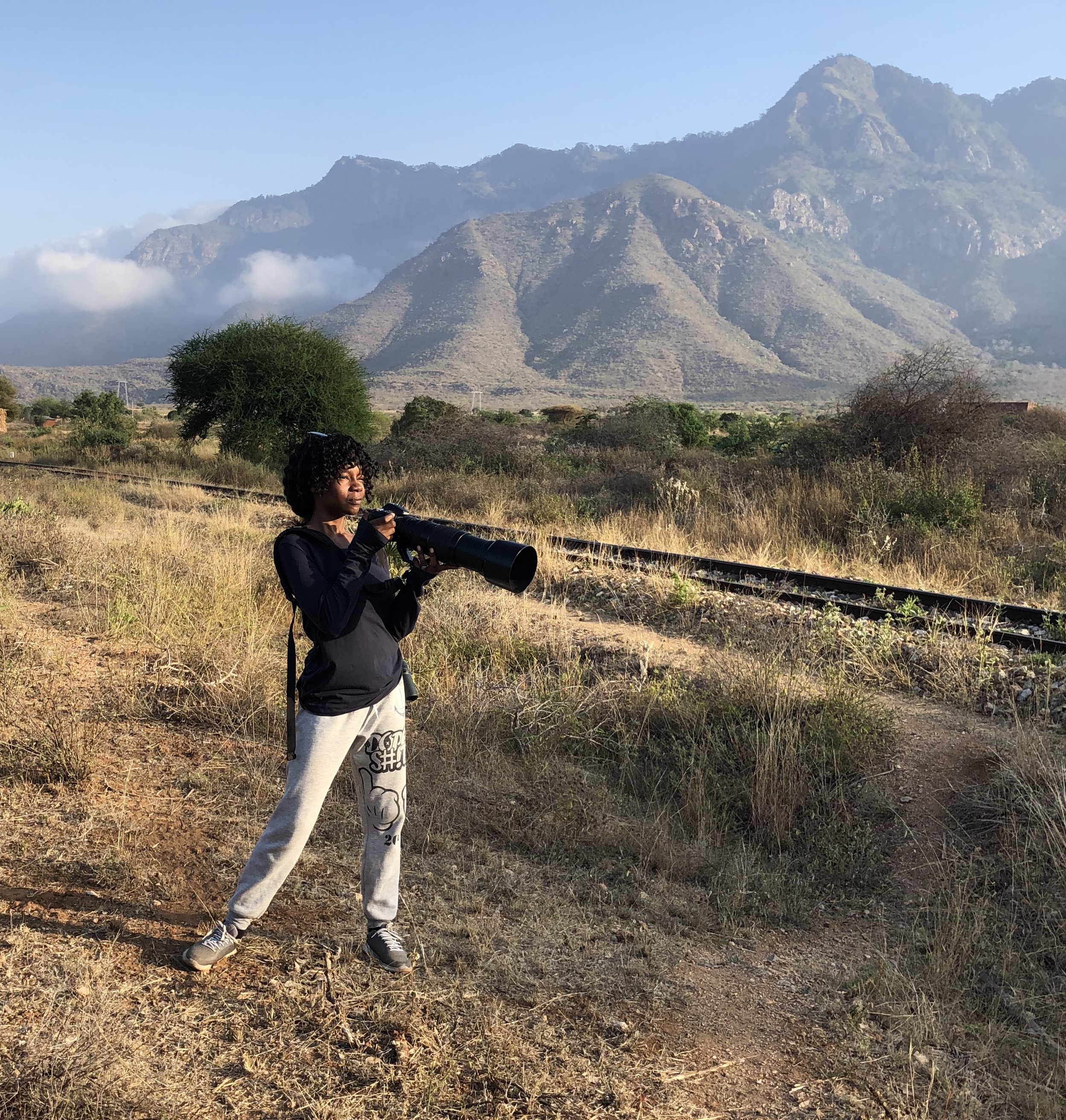
Selvine in action

Usambara Double-collared Sunbird, Cinnyris usambaricus – Endemic to South Pare and Usambara Mountains, Tanzania
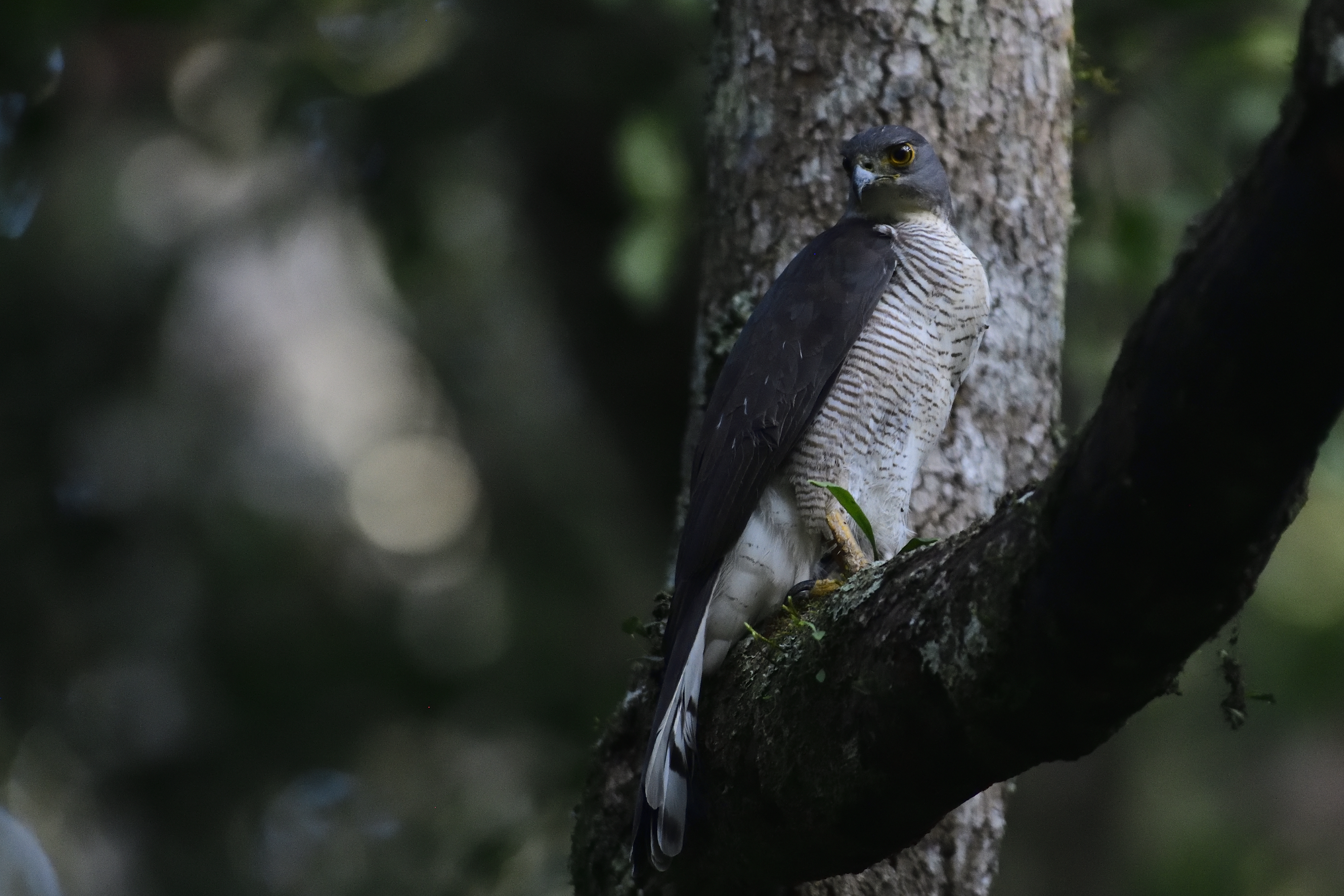
African Goshawk, Accipiter tachiro
Day 7, Sunday, September 29 – Magamba Forest
I woke up very early from noice outside my tent. I opened up and saw Sybrand standing there freezing. I got out of bed and got the coffee going at the same time I gave him some spare warm clothes and he was soon back in form. We got the fire going as well and were soon joined by Martin. We realised that we had done extremely good the day before and only had a few targets to get, actually only one, the Usambara Greenbul. That is a bird I had only seen once, so not an easy bird. We did the morning birding and came back for breakfast. For Sybrand it was a numbers game. He could not spend two full days looking for one bird, so we agreed to cut the Magamba stay short with one day. We continued birding all day and did not encounter anything new for Sybrand. We should actually have left after the morning birding, but stayed on. No new birds added to the list this day.
Some pictures from Day 7:
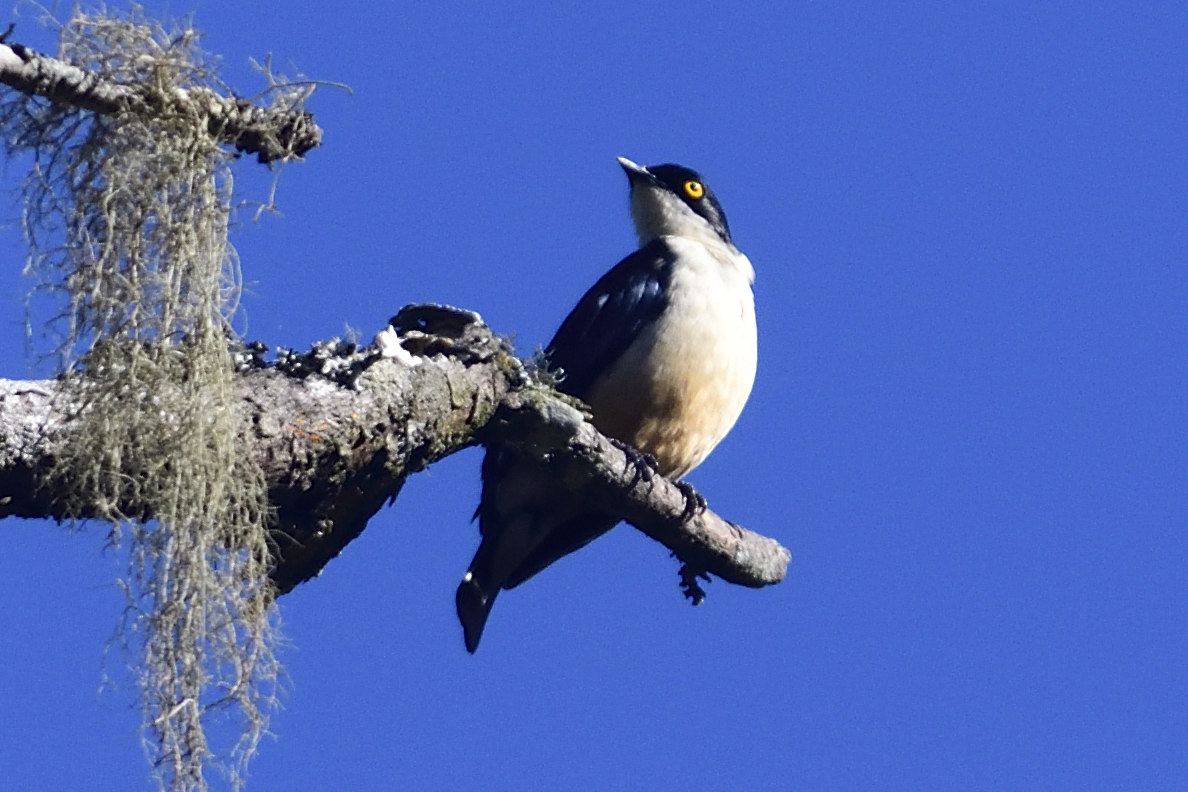
Sharpe´s Starling, Phola sharpi – Endemic to NE Africa

Black Saw-wing, Psalidoprocne pristoptera

Selvine is a fantastic Bush Cook
Day 8, Monday, September 30 – Magamba Forest to Amani Forest, East Usambara
We packed camp in the morning and birded the lower part of Magamba Forest, still no new birds, so we decided to leave for Amani Forest. It is quite a drive, but we made good speed. We stopped in Muheza to stock up on supplies. We soon drove up the terrible road up to Amani Forest. We were to stop on the lower part of the forest, but it was raining heavily, so we gave up on that. Robert was waiting for us at the Amani headquarters and we got our assigned rooms. We still had time for birding and made a walk: Banded Green Sunbird, Green Barbet, Silvery-cheeked Hornbill, White-eared Barbet, Pale Batis, Purple-banded Sunbird, Southern Citril, Brown-hooded Kingfisher, African Green Pigeon, Waller´s Starling, and White-chested Alethe were some of the birds recorded. Sybrand heard the Usambara Eagle-Owl at night.
Picture from Day 8
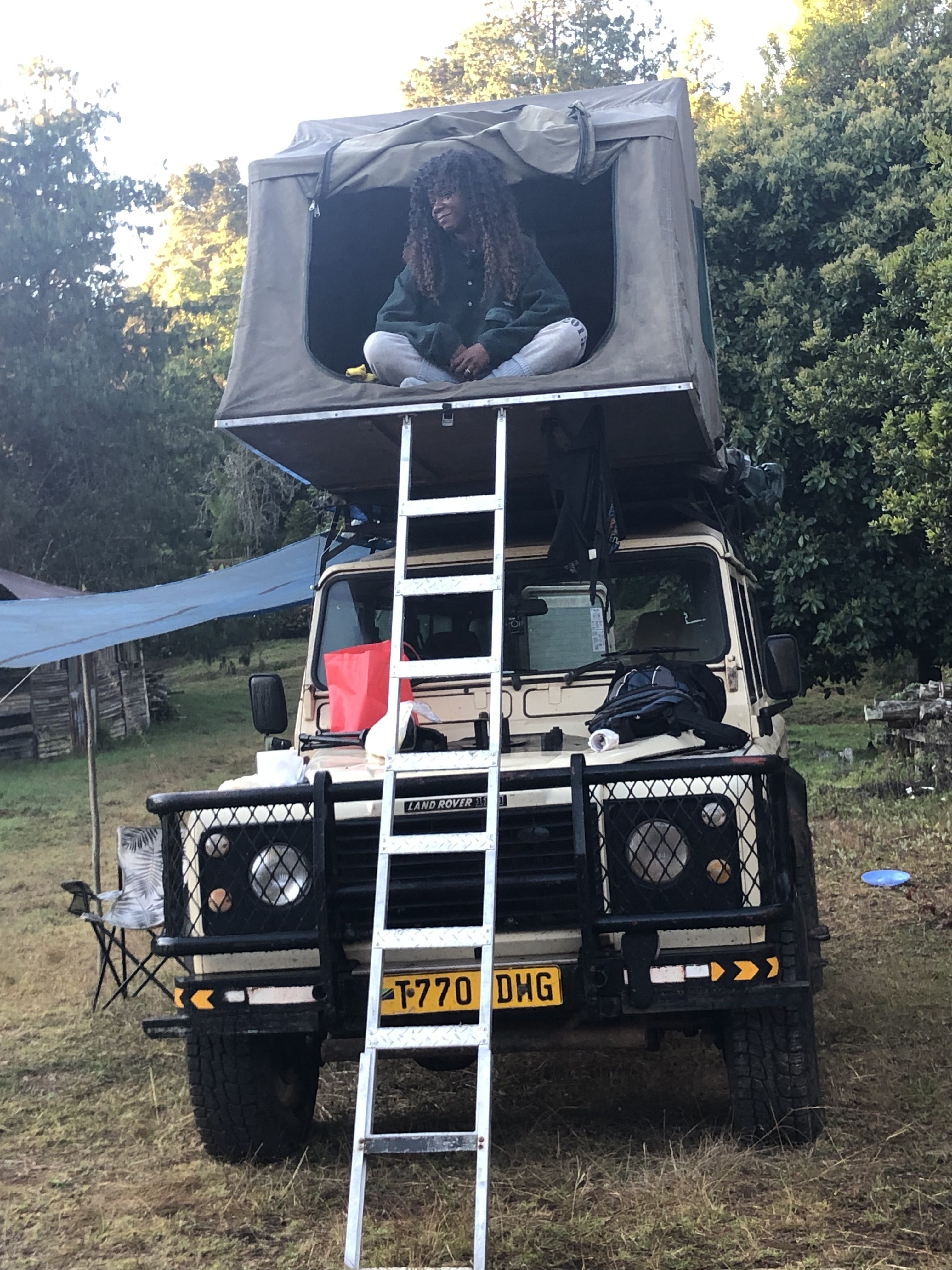
Early morning for Selvine
Day 9, Tuesday, October 1, 2019 – Amani Forest
Today we were going for some of the Amani specials namely the Long-billed Forest-Warbler and Kretchmer´s Longbill. However; it was still raining. We had breakfast and saw Mountain Wagtail and Red-tailed Ant- Thrush. The rain eventually stopped and we got in the car for the drive up to the spot. We parked the car and started the walk. Little Greenbul, Uluguru Violet-backed Sunbird, and Spectackled Weaver. were seen on the path. We went to the spot for the Forest-Warbler and it popped right out. A little further on we also had views of the Kretchmer´s Longbill. We could lower our shoulder and relax. On the same spot we had good views of Fischer´s Turaco and Black-bellied Starling. We returned to camp and had dinner.
Some pictures from day 9

Long-billed Forest-Warbler, Artisomis moreaui – Endemic to East Usambara, TZ and Semi Joci, Mozambique

Celebrating Sybrand´s new bird number 100 on the trip. Time to bring out the bubbly.
Day 10, Wednesday, October 2, 2019 – Amani Forest
We started with the loop around the headquarter this day and started picking up birds. Banded Green Sunbird, Amani Sunbird, Pale-breasted Illadopsis, Shelley´s Greenbul, African Harrier-Hawk, African Goshawk, East Coast Boubou, Southern Banded Snake Eagle, Black Sparrowhawk, Kenrick´s Starling, Red-capped Robin-Chat, Brown Snake Eagle, Green Twinspot, Lesser Honeyguide and Red-rumped Swallow were seen before breakfast. After breakfast, we went to the place for Sharpe´s Akalat. We searched and searched, but could not find it. I heard an African Broadbill and we saw Mottled Spinetailand and a long-crested Eagle, but it was quiet.
Some pictures from day 10:

East Coast Boubou, Laniarius sublacteus – Endemic to Coastal East Africa
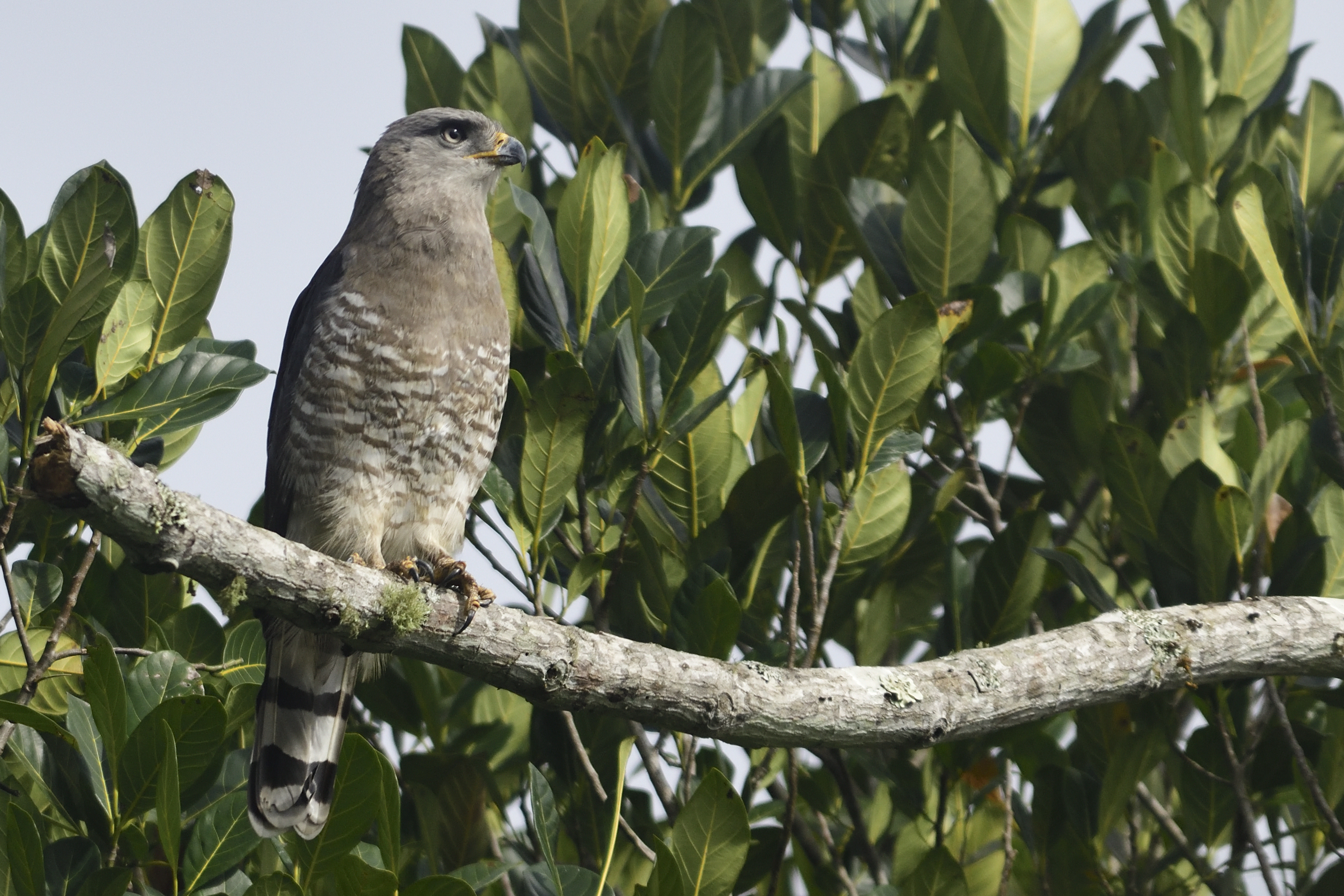
Southern Banded Snake Eagle, Circaetus fasciolatus
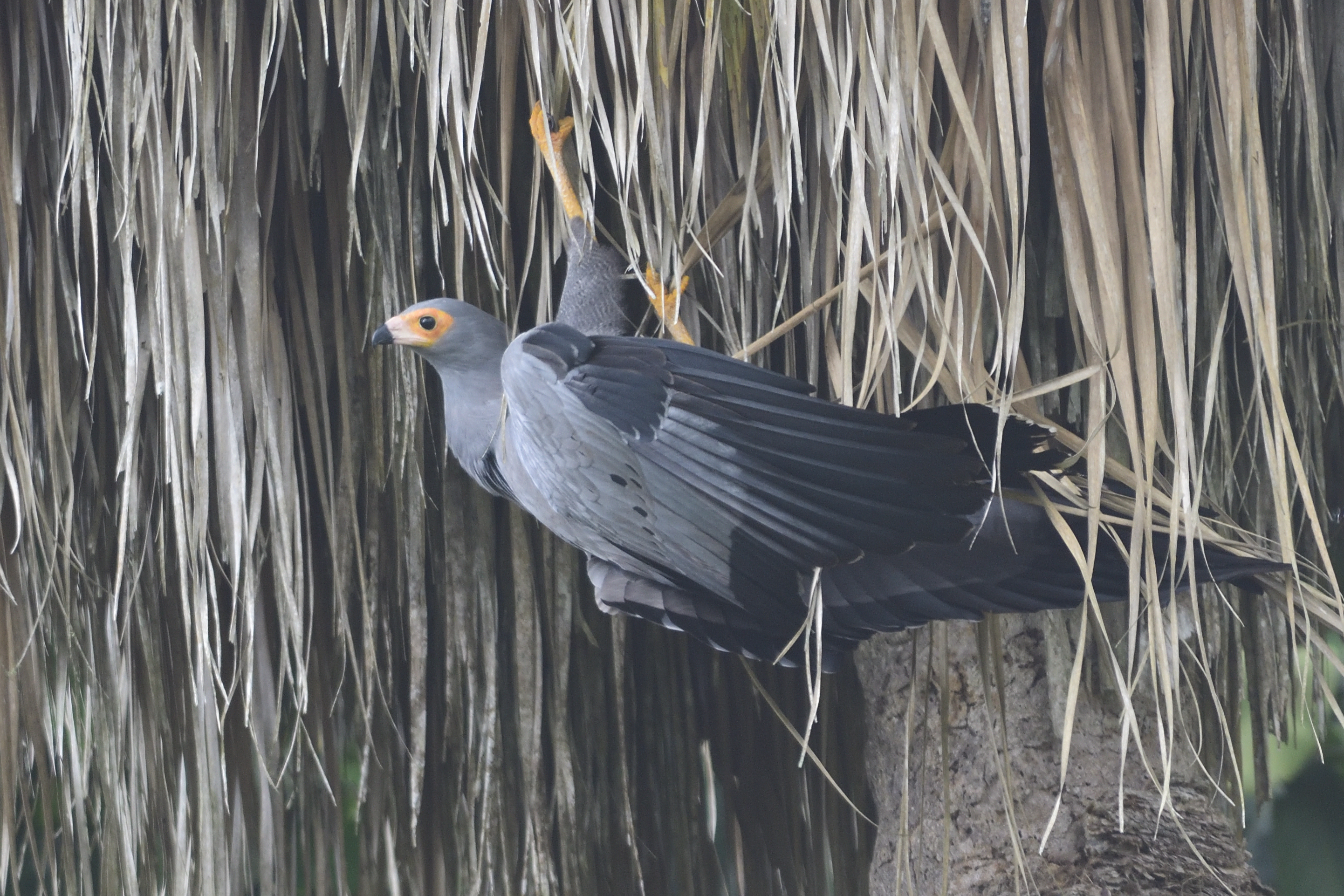
African Harrier-Hawk, Polyboroides typus

Banded Green Sunbird, Anthreptes rubritorques – Endemic to Eastern Arc Mountains, Tanzania
Day 11, Thursday, October 3, 2019 – Amani Forest to Tanga
Sybrand missed some Coastal Birds and we decided to make a detour to Tanga to see if we could get him some new birds there. First we were going to bird the lower part of Amani. We started early and was at the patch around 07:30. The birds were active: Chestnut-fronted Helmetshrike, Green-headed Oriole, Eastern Nicator, Square-tailed Drongo, Dark-backed Weaver and Little Yellow Flycatcher were added. We drove toward Tanga and once there found a hotel. I have never birded there before, so it was a hit and run. We found a place with some vaders and we found a Dimorphic Egret and a Greater Sandplover, both birds that Sybrand needed. In addition the usual stuff like Common Sandpiper, Grey Plover, Common Greenshank, Curlew Sandpiper, Common Ringed Plover, Terek Sandpiper, Little Stint, Ruddy Turnstone, Whimbrel ++
Day 12, Friday, October 4 – Tanga to Same
We decided to bird a little south of Tanga this day. At one spot we got Coastal Cisticola, Green Tinkerbird and Brown-breasted Barbet, we drove on picked up some new birds from the car: African Spoonbill, White Stork, Black-collared Barbet, Yellow-throated Longclaw, Wolly-necked Stork and Northern Carmine Bee-eater were added before we had to start the long way to Same. We dropped Martin at Muheza and continued alone. Just before Same, we made the turnoff to South Pare Mountains. We were running late and focused only on finding the South Pare White-eye. We searched and searched at the normal spots, but could not locate it. Just before we gave up, we saw a flock of 5-6 birds so we could finally tick off another TZ endemic. It was getting late and it got dark before we arrived at Elephant Lodge. Luckily they had rooms for us now and after dinner, we retired early.
Picture from Day 13

Yellow-throated Longclaw – Macronyx croceus
Day 14, October 5 – Same to Kiligolf
We decided to go to the area around Mkomazi NP in the morning. White-headed Mousebird, Bare-eyed Thrush, Slate-coloured Boubou, Orange-breasted Bushshrike, Rosy-patched Bushshrike before we finally found our target: Fischer´s Starling. We left for home and arrived at Kiligolf in the early afternoon. We relaxed that afternoon.
Day 15, October 6 – Kiligolf. We birded the Golf estate this day, but without finding anything special. Best bird was a Gabar Goshawk. Sybrand ended the Tanzanian leg of the trip with 319 species seen where 119 were new birds for his African big year. (He added 5 species later at Pemba Island after our Kenyan leg). So before we left for Kenya his African total was 1285 birds. We were going to leave for Kenya the day after, a long drive so we repacked the car and retired early. This is the end of Part 1 of the trip with Sybrand. Part 2 will be the Kenyan leg of the trip. Stay tuned. To see how Sybrand did on his Big Year go his blog: vagranttwitcher.wixsite.com/bigyear/blog-1